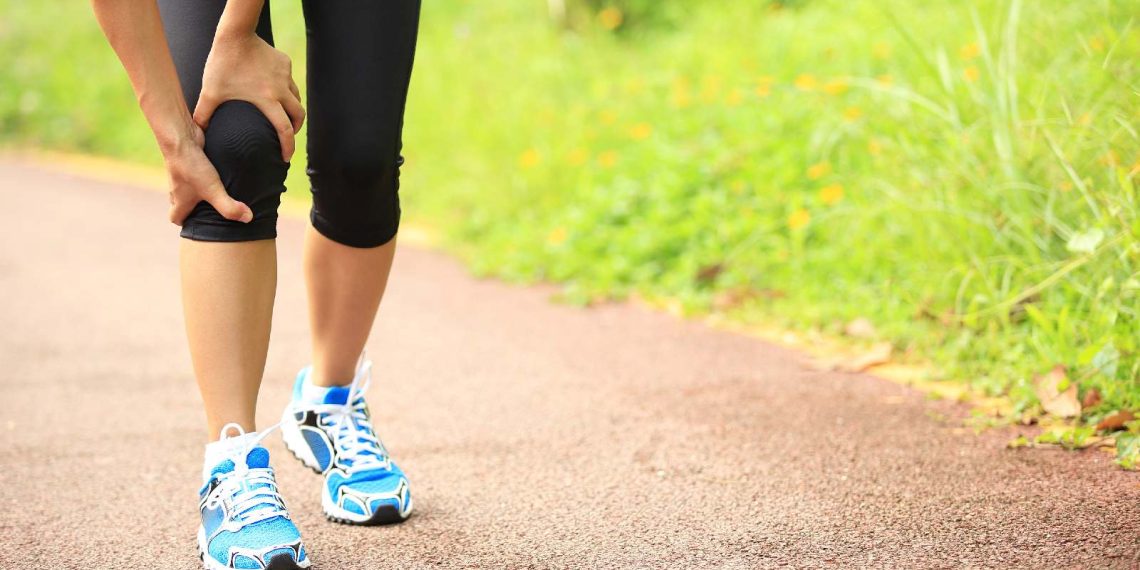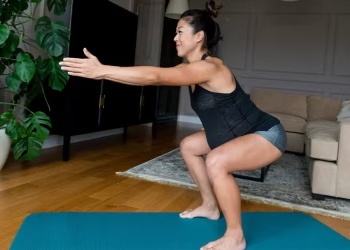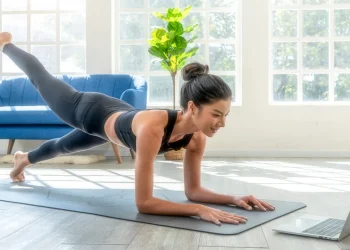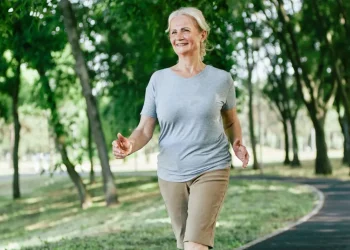Living with arthritis can feel like a constant balancing act between staying active and protecting your joints. Yet one of the most beneficial activities you can do for arthritic joints is also one of the simplest: walking. This low-impact exercise offers powerful benefits for managing arthritis symptoms while being accessible to most people, regardless of fitness level.
Understanding Why Walking Helps Arthritis
When you have arthritis, your first instinct might be to rest your painful joints. While rest has its place during acute flare-ups, prolonged inactivity can actually worsen arthritis symptoms over time. Walking stimulates circulation to your joints, delivering essential nutrients and oxygen while removing inflammatory waste products. This increased blood flow helps reduce stiffness and can decrease pain levels.
Walking also strengthens the muscles surrounding your joints, providing better support and stability. Strong muscles act as shock absorbers, reducing the stress placed directly on arthritic joints. For people with knee or hip arthritis, stronger quadriceps and hip muscles can significantly reduce pain and improve function. Additionally, walking helps maintain healthy cartilage by promoting the production and circulation of synovial fluid, which lubricates your joints naturally.
Beyond the direct joint benefits, walking helps with weight management, which is crucial for arthritis sufferers. Every pound of excess weight places approximately four pounds of pressure on your knees. By helping you maintain a healthy weight, walking reduces the mechanical stress on weight-bearing joints. The exercise also triggers the release of endorphins, your body’s natural pain relievers, which can improve both physical comfort and emotional wellbeing.
Getting Started Safely
Beginning a walking program with arthritis requires a thoughtful approach. Before starting any new exercise routine, consult with your healthcare provider or physical therapist, especially if you have severe arthritis or other health conditions. They can help you understand your specific limitations and develop an appropriate plan.
Start with short, manageable distances. If you’re new to regular walking, begin with just five to ten minutes at a comfortable pace. You might feel discouraged by this modest beginning, but consistency matters more than duration when starting out. It’s better to walk for five minutes daily than to push too hard and aggravate your joints, forcing you to stop exercising altogether.
Choose your timing wisely. Many people with arthritis experience increased stiffness in the morning, so you might find afternoon or early evening walks more comfortable. However, some individuals find that gentle morning walks help loosen stiff joints for the day ahead. Experiment to discover what works best for your body and schedule.
Proper Walking Technique
Good walking form can make the difference between a therapeutic exercise and one that causes additional strain. Begin by standing tall with your shoulders relaxed and pulled slightly back. Your head should be up, eyes forward, looking about twenty feet ahead rather than down at your feet. This posture keeps your spine aligned and reduces neck and back strain.
As you walk, land on your heel and roll through to your toe in a smooth motion. Avoid slapping your feet down or taking excessively long strides, which can jar your joints. Your arms should swing naturally at your sides in opposition to your legs—left arm forward with right leg, and vice versa. This natural arm swing helps maintain balance and adds a gentle upper body workout.
Keep your stride natural and comfortable. Overstriding forces your leading leg to absorb more impact and can strain your hip and knee joints. Instead, focus on taking more steps rather than longer steps if you want to increase your pace. Your feet should land almost directly under your body rather than far out in front.
Essential Equipment Considerations
Proper footwear is arguably your most important investment for arthritis-friendly walking. Look for shoes with excellent cushioning to absorb impact, good arch support to maintain proper alignment, and a flexible sole that allows natural foot movement. The heel counter—the back part of the shoe that cups your heel—should be firm and supportive. Replace your walking shoes every 300-500 miles or when you notice the tread wearing down or the cushioning becoming compressed.
If you have arthritis in your feet or ankles, consider custom orthotics or over-the-counter arch supports. These can redistribute pressure away from painful areas and improve overall foot mechanics. Some people benefit from shoes with a slight rocker bottom, which reduces the force needed to push off with your toes.
Walking poles or a walking stick can be invaluable tools, especially if you have hip, knee, or ankle arthritis. These aids reduce the load on lower body joints by distributing some of your weight to your upper body. Nordic walking poles, used with both hands, provide an excellent full-body workout while minimizing joint stress. A single cane or walking stick, held on the opposite side from your most painful joint, can reduce load on that joint by up to 25%.
Choosing the Right Walking Surface
Where you walk matters as much as how you walk. Soft, even surfaces are kindest to arthritic joints. Trails with packed dirt or gravel, rubberized tracks, and grass paths provide better shock absorption than concrete sidewalks. If outdoor options are limited, consider walking inside a shopping mall, which offers climate control, smooth surfaces, and the social atmosphere that can make exercise more enjoyable.
Avoid uneven terrain, especially when you’re starting out or during symptom flare-ups. Rocks, roots, holes, and steep inclines increase your risk of falls and can cause awkward movements that stress your joints. Similarly, be cautious on slippery surfaces when wet or icy. If you must walk on harder surfaces like concrete, pay extra attention to wearing well-cushioned shoes.
Warming Up and Cooling Down
Never start walking at full pace with cold, stiff joints. Spend five to ten minutes warming up with gentle movements that mimic walking but at a slower pace and smaller range of motion. March in place, do some gentle leg swings, and rotate your ankles. If your hands and wrists are affected by arthritis, do some gentle finger flexes and wrist circles. You might also apply heat to particularly stiff joints before walking—a warm shower or heating pad can help prepare your body for movement.
After your walk, cool down with five minutes of slower-paced walking, allowing your heart rate and breathing to return to normal gradually. This is an excellent time for gentle stretching while your muscles are warm. Focus on your calves, hamstrings, quadriceps, and hip flexors. Hold each stretch for 20-30 seconds without bouncing, and stop if you feel pain.
Managing Symptoms and Flare-Ups
Even with the best preparation, you’ll occasionally experience increased pain or stiffness. Learning to distinguish between the normal discomfort of unused muscles getting stronger and pain that signals you’re overdoing it is essential. A general rule is that mild discomfort during exercise is acceptable, but sharp pain is not. Any pain that persists more than two hours after exercise suggests you’ve pushed too hard.
During flare-ups, don’t abandon walking entirely unless your doctor advises it. Instead, reduce your duration, distance, or pace. Walking for just five minutes might be all you can manage some days, and that’s perfectly acceptable. Consistency over the long term is what matters. You might also try walking in a pool during flare-ups—the water’s buoyancy removes stress from joints while providing gentle resistance that strengthens muscles.
Ice can be helpful after walking if you experience swelling or increased warmth in your joints. Apply ice wrapped in a towel for 15-20 minutes to any problematic areas. Some people find alternating heat before exercise and cold after provides optimal symptom management.
Progressive Improvement
As your body adapts to regular walking, gradually increase your duration or distance. A good rule of thumb is to increase by no more than 10% per week. If you’re walking ten minutes daily, add just one minute the following week. This conservative progression allows your joints, muscles, and connective tissues to adapt without becoming overwhelmed.
Consider varying your routine to maintain motivation and challenge your body in different ways. Alternate between flat routes and those with gentle hills, change your walking locations, or vary your pace with intervals of slightly faster walking. Some days might be shorter maintenance walks, while others are longer, leisurely strolls. This variation prevents both boredom and overuse injuries.
Special Considerations for Different Types of Arthritis
If you have osteoarthritis in your knees or hips, focus on maintaining a shorter stride and avoiding steep hills, especially downhill walking which increases joint compression. People with rheumatoid arthritis should be particularly attentive to systemic fatigue and adjust their walking on days when disease activity is higher. For those with arthritis in the spine, maintaining good posture becomes even more critical, and you might benefit from occasional walking breaks where you perform gentle back extensions.
Making Walking a Sustainable Habit
The benefits of walking for arthritis only continue if you make it a regular part of your life. Set realistic goals, track your progress, and celebrate small victories. Walking with a friend or joining a walking group can provide social support and accountability. Many communities have arthritis-specific exercise programs that include supervised walking groups.
Remember that some days will be harder than others, and that’s normal with arthritis. The goal isn’t perfection but persistence. Every step you take is an investment in your joint health, mobility, and overall quality of life. With patience, proper technique, and attention to your body’s signals, walking can become a powerful tool in managing your arthritis symptoms and maintaining your independence for years to come.
- what is tai chi walking for arthritis
- joint health with arthritis
- low-impact options for arthritis
- benefits for arthritis sufferers
- gentle exercise for seniors with arthritis
- arthritis-friendly exercises for elderly
- gentle movement for arthritis
- proper posture for arthritis
- maintaining flexibility with arthritis
- mobility for arthritis patients






